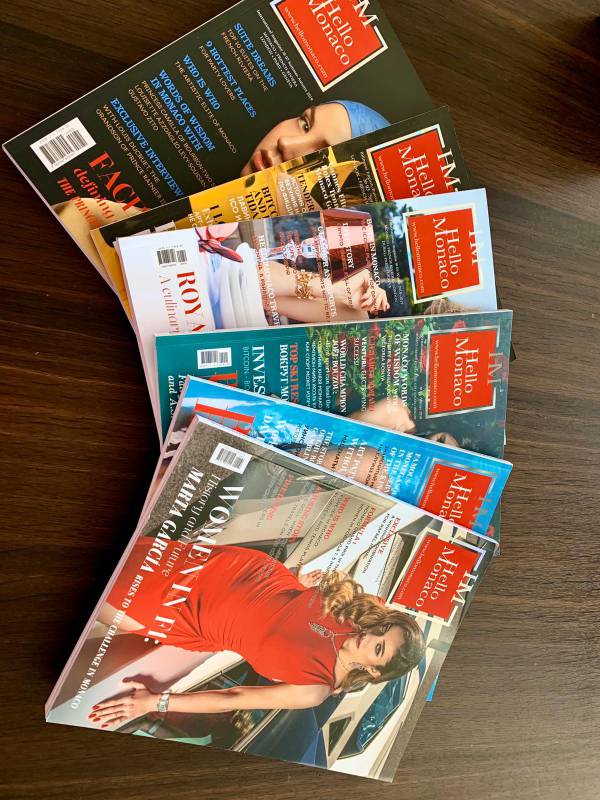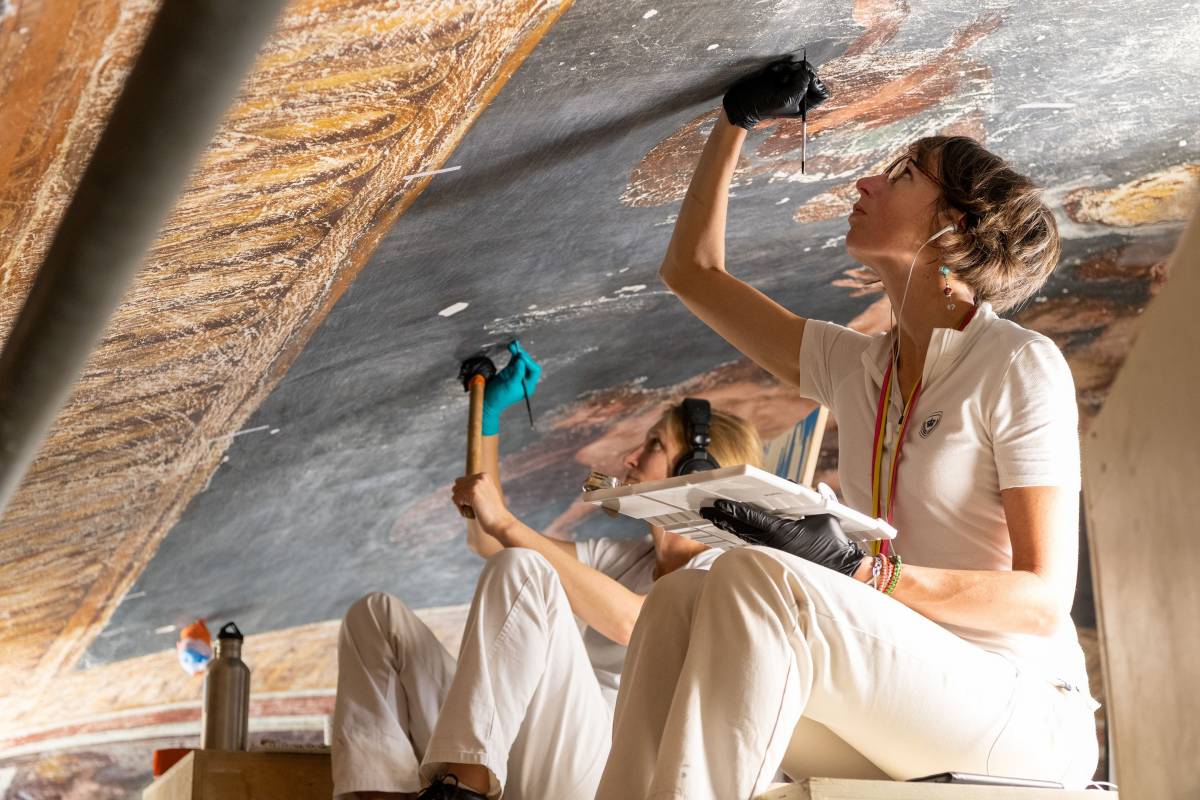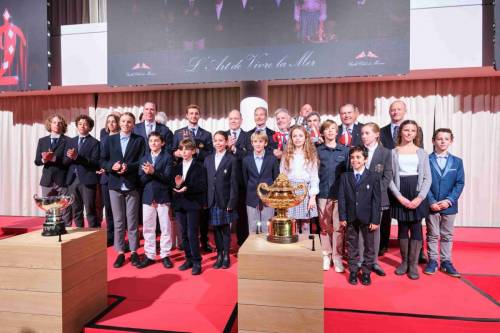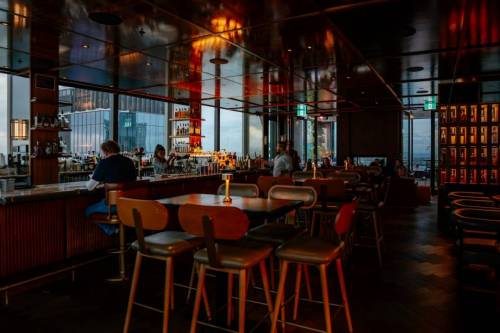Hidden under layers of paint for centuries, the Palace’s Throne Room frescoes are ready to be admired. According to the Palais de Monaco, “The restoration’s outcome goes well beyond anything imaginable!”
The Palace’s hidden frescoes were first discovered by sheer luck in 2015. Placed under the patronage of HSH Prince Albert II, the conservation and restoration projects have strengthened the Palace of Monaco’s place in the history of global art. Not only is this due to the scale of the discoveries, but also the innovative and sustainable approach to their restoration.
Throne Room frescoes completed
In 2020, investigations revealed that the original ceiling fresco depicted Ulysses’ Nekuia. Four years later, the fresco has been restored to its original splendour. Now, visitors can admire the fascinating story that unfolds around a central scene depicting the Zodiac signs, which illustrate human activities throughout the seasons and offer a journey through time and the stars. The lunettes in the throne room depict the stages of the Odyssey, recounting the hero Ulysses’ journey home after the Trojan War.
“Cracks” in the frescoes
Several professionals in white shirts and gloves have been working tirelessly for year on the exciting restoration, sometimes adding a bit of their own creativity to the project. If you’ve visited the palace, have you noticed “cracks” in the lunettes of the Galerie d’Hercules? If you look more closely, you will see that they are actually painted panels.
In 2018, studies revealed frescoes presumed from the 16th century on several lunettes of the Galerie d’Hercules. However, the lower part of these frescoes was destroyed during architectural modifications of the Palace and were then repainted and altered in the 19th and 20th centuries. The “cracks” create an aesthetic unity between the top and bottom of these magnificent lunettes.
The innovative project required several months of work and was presented by Julia Greiner and Marion Jaulin at the 7th international RECH7 conference in Lisbon. Julia Greiner is the chief conservator-restorer of the Palace frescoes.
Unprecedented use of lasers…
Curator-restorer Eleonora Cerra is the laser manager for Palace frescoes and previously worked on the restoration of Egyptian sarcophagi at the Musée Royal in Brussels. She proposed laser cleaning of the decorations to avoid the use of chemical products in response to the Prince’s wish of keeping the site environmentally responsible. The use of lasers on this project has paved the way for an unprecedented study of this technology for the conservation and restoration, making Eleonora a pioneer in this field.
Architect discovers a false ceiling in the Salon Louis XIII
Aside from painters and laser experts, architect Annie Vandemalle joined the Palace frescoes team in 2016. Using plans and blueprints of the Palace dating back to 1720, she has studied its architectural evolution and analyzed its smallest details, including decorations and monograms. Her intuition and meticulous observations, particularly of the cornices, led to an exceptional discovery: a false ceiling in the Salon Louis XIII which concealed more frescoes that had been hidden for over 5 centuries.
Mystery explained by more mystery…
Up next, the Princely Palace teams will be tackling the Renaissance frescoes in the Salon Louis XIII and in the Cour d’honneur.
“What better illustration of Jean Ray’s ‘Mystery can only be explained by more mystery’ quote than the astonishing discovery that occurred during the fresco restoration at the Prince’s Palace: a square of light… hiding other masterpieces older than those of the Italian Renaissance, which date back to the 13th century…As of yet, it is a very small window into a still unsolved past… A door that opens the imagination and makes the hearts of historians and restorers flutter,” said the Prince’s Palace.









